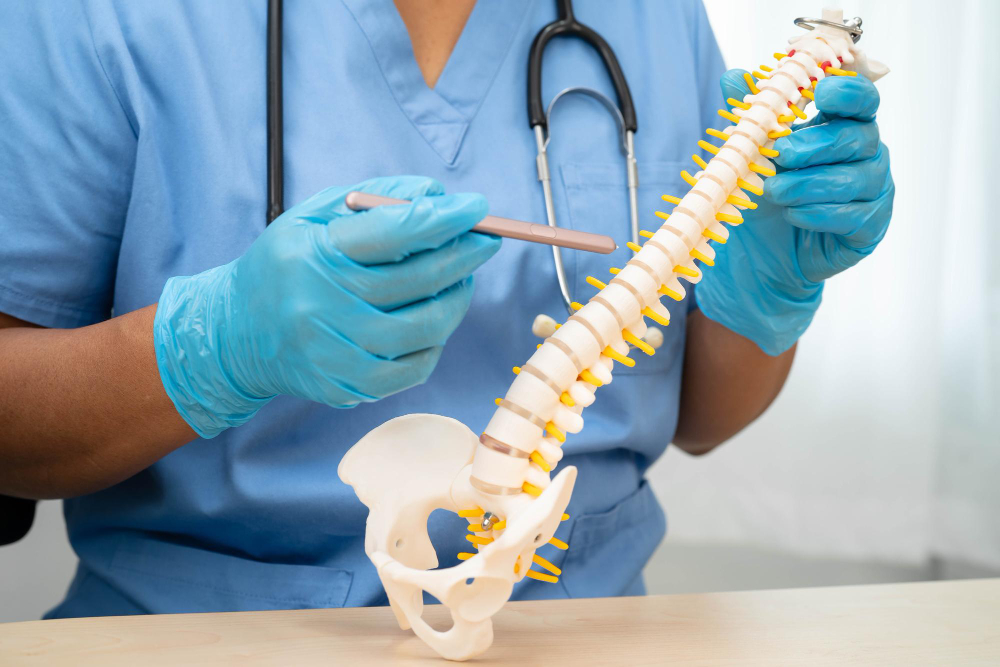
Scoliosis, a condition characterized by an abnormal curvature of the spine, can often be managed without surgery. However, for some individuals, spinal fusion is recommended as a long-term solution to alleviate pain, improve posture, and prevent further complications. If you're considering spinal fusion surgery or simply want to understand the procedure better, this guide will provide you with valuable insight.
Additionally, if you are seeking expert care, it’s crucial to find a qualified orthopedic surgeon for this procedure. If you live in Deland, FL, the team at Central Florida Bone & Joint Institute is here to help.
What Is Spinal Fusion for Scoliosis?
Spinal fusion is a surgical procedure that involves permanently joining two or more vertebrae in the spine. By doing so, the curvature caused by scoliosis is corrected, and the fused section stabilizes the spine.
Why Is Spinal Fusion Recommended?
Spinal fusion is often suggested when scoliosis causes severe symptoms, such as:
- Chronic back pain that limits daily activities
- Significant spinal deformities impacting posture and appearance
- Complications like breathing difficulties caused by the spine's curvature
- Progressive worsening of the spinal alignment
Orthopedic surgeons assess each case carefully, recommending surgery only when non-surgical treatments like bracing or physical therapy are insufficient.
How Does Spinal Fusion Surgery Work?
Understanding the process of spinal fusion can help ease anxiety and prepare you for surgery. Below, we outline the primary steps involved in the procedure.
Pre-Surgery Prep
Before scheduling your surgery, your orthopedic surgeon will conduct a thorough consultation. This might include diagnostic imaging like X-rays, MRIs, or CT scans to determine the extent of your scoliosis. Preoperative planning is crucial to ensure optimal correction of the curvature.
The Procedure
Typically performed under general anesthesia, spinal fusion surgery involves the following steps:
- Incision: The surgeon creates an incision either on the back (posterior approach) or on the front/side of the torso (anterior approach).
- Curve Correction: Metal rods, screws, and hooks are placed along the affected vertebrae to realign the spine.
- Bone Fusion: A bone graft is used to fuse the vertebrae. This may involve using your own bone (from the pelvis) or a donor bone. Over time, the graft promotes new bone growth, permanently connecting the vertebrae.
Recovery
After surgery, patients typically stay in the hospital for several days. During this time, the care team closely monitors your recovery, manages pain, and provides guidelines for mobility. Full healing and spinal fusion can take several months to a year.
What Are the Benefits of Spinal Fusion?
The main goal of spinal fusion surgery is to improve the quality of life for scoliosis patients. Here are some key benefits of the procedure:
- Improved Posture: Treatment can help correct the curve, enhancing both posture and appearance.
- Reduced Pain: Many patients experience relief from chronic back pain caused by scoliosis.
- Stabilization of the Spine: Fusing the curved section of the spine prevents further progression of the condition.
- Enhanced Confidence: For some individuals, addressing the cosmetic effects of scoliosis can significantly boost self-esteem.
Risks and Considerations
While spinal fusion has a high success rate, it is important to be aware of potential risks, such as:
- Infection or complications related to the incision site
- Reduced range of motion in the fused section of the spine
- Bone graft healing issues
- Hardware complications requiring future adjustments
A skilled and experienced orthopedic surgeon, like those based in Deland, FL, can minimize these risks and ensure a successful outcome.
How to Prepare for Surgery
Preparation plays a key role in recovery. Below are tips to help patients get ready:
- Follow Medical Guidance: Adhere to pre-surgery instructions from your surgeon, including dietary restrictions or medication adjustments.
- Stop Smoking: Smoking can impair healing and impact bone fusion success, so it’s essential to stop before surgery.
- Plan Your Recovery: Arrange for assistance at home during the initial recovery period. Ensure your living space is organized with easy access to essential items.
Life After Spinal Fusion
The good news is that most individuals enjoy significant improvement in their quality of life following spinal fusion. Here’s what you can expect in the months ahead:
- Gradual Recovery
Walking and light activity will begin shortly after surgery, while strenuous physical activity should be avoided until cleared by your surgeon. Physical therapy may be introduced to strengthen your muscles.
- Long-Term Results
The fused section of your spine will be permanently stabilized, with a reduced likelihood of further curvature. Most patients return to normal activities, including work and hobbies, within six to twelve months.
Choosing an Orthopedic Surgeon in Deland, FL
Selecting the right orthopedic surgeon is crucial for a successful spinal fusion. When searching for the best care in Deland, FL, trust Central Florida Bone & Joint Institute. Our skilled team combines decades of experience with cutting-edge technology to deliver personalized treatment plans tailored to your needs.
Transform Your Spine, Transform Your Life
Living with scoliosis doesn’t have to mean living with discomfort or limitations. Spinal fusion offers a proven solution for many patients, helping to realign their spine and reclaim their quality of life.
If you're looking for an experienced orthopedic surgeon in Deland, FL, contact the specialists at Central Florida Bone & Joint Institute today. We’re here to provide comprehensive care and guide you every step of the way.